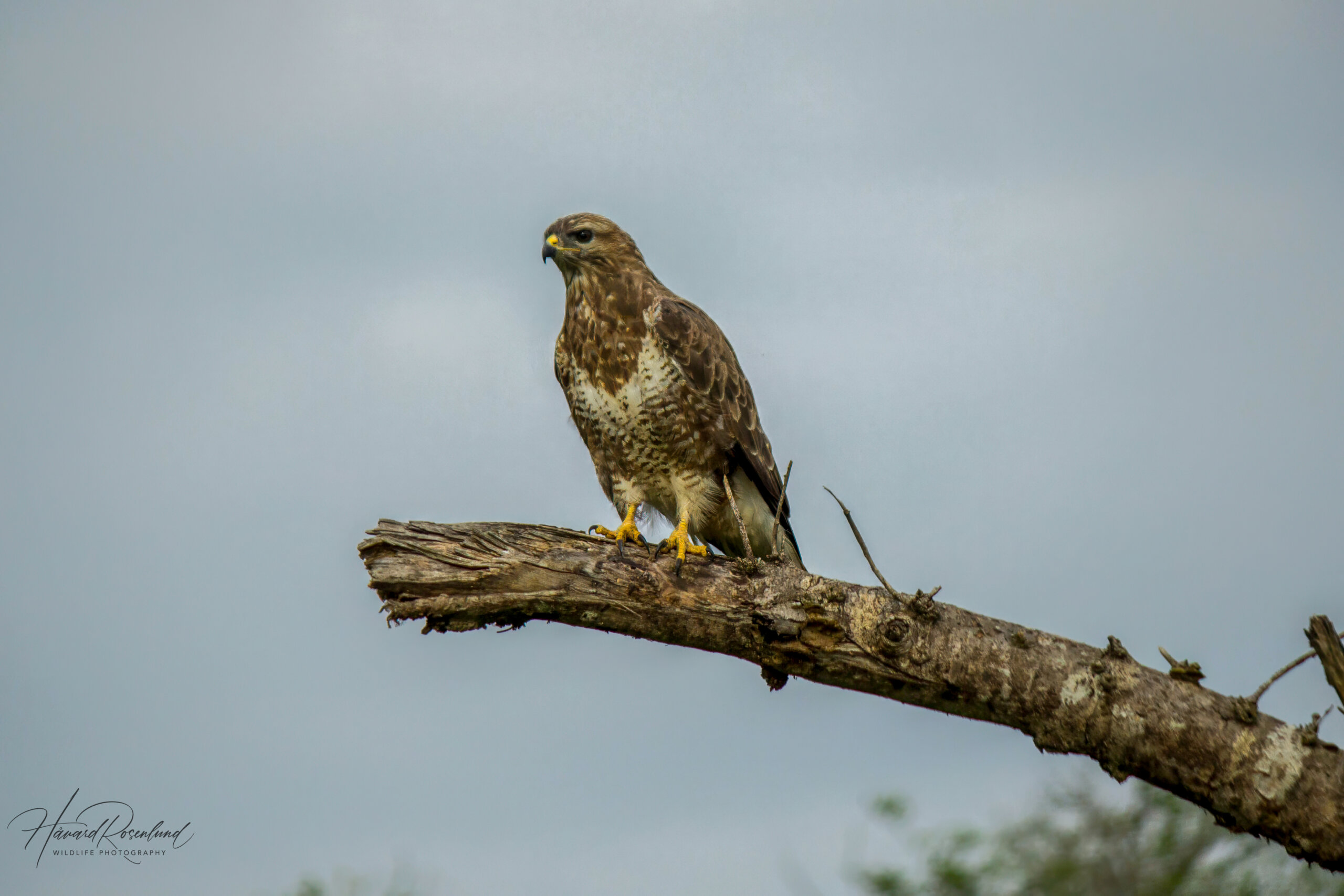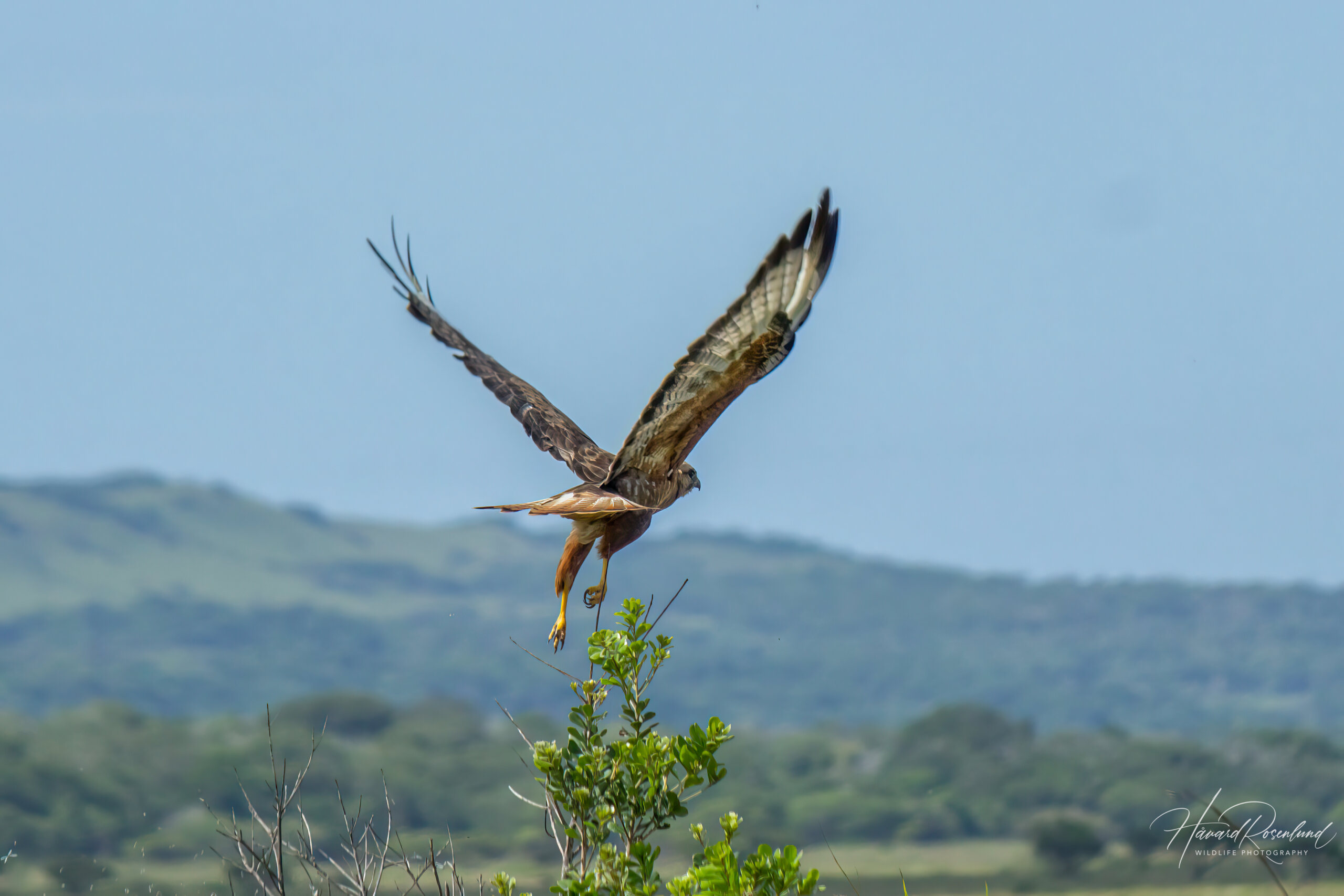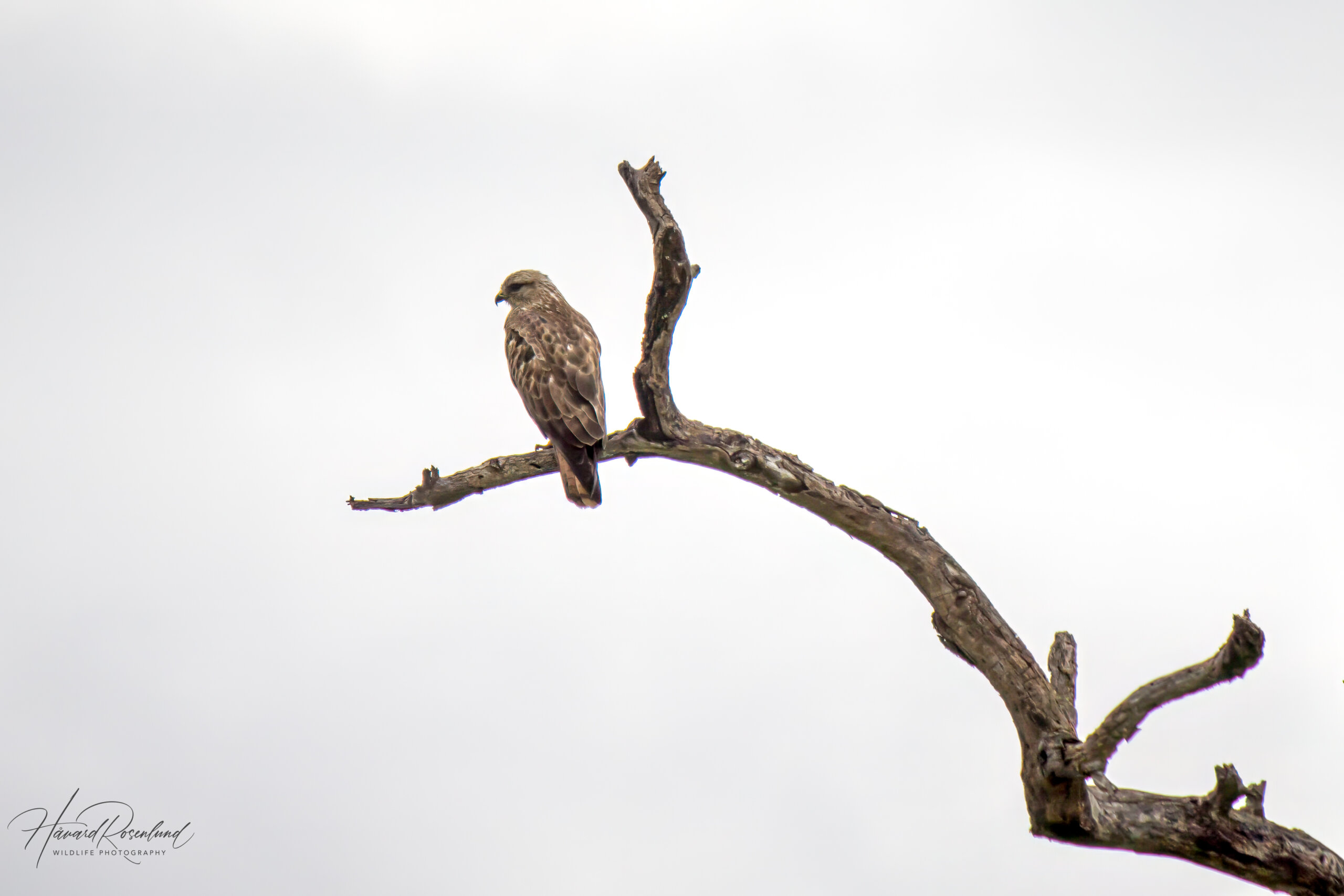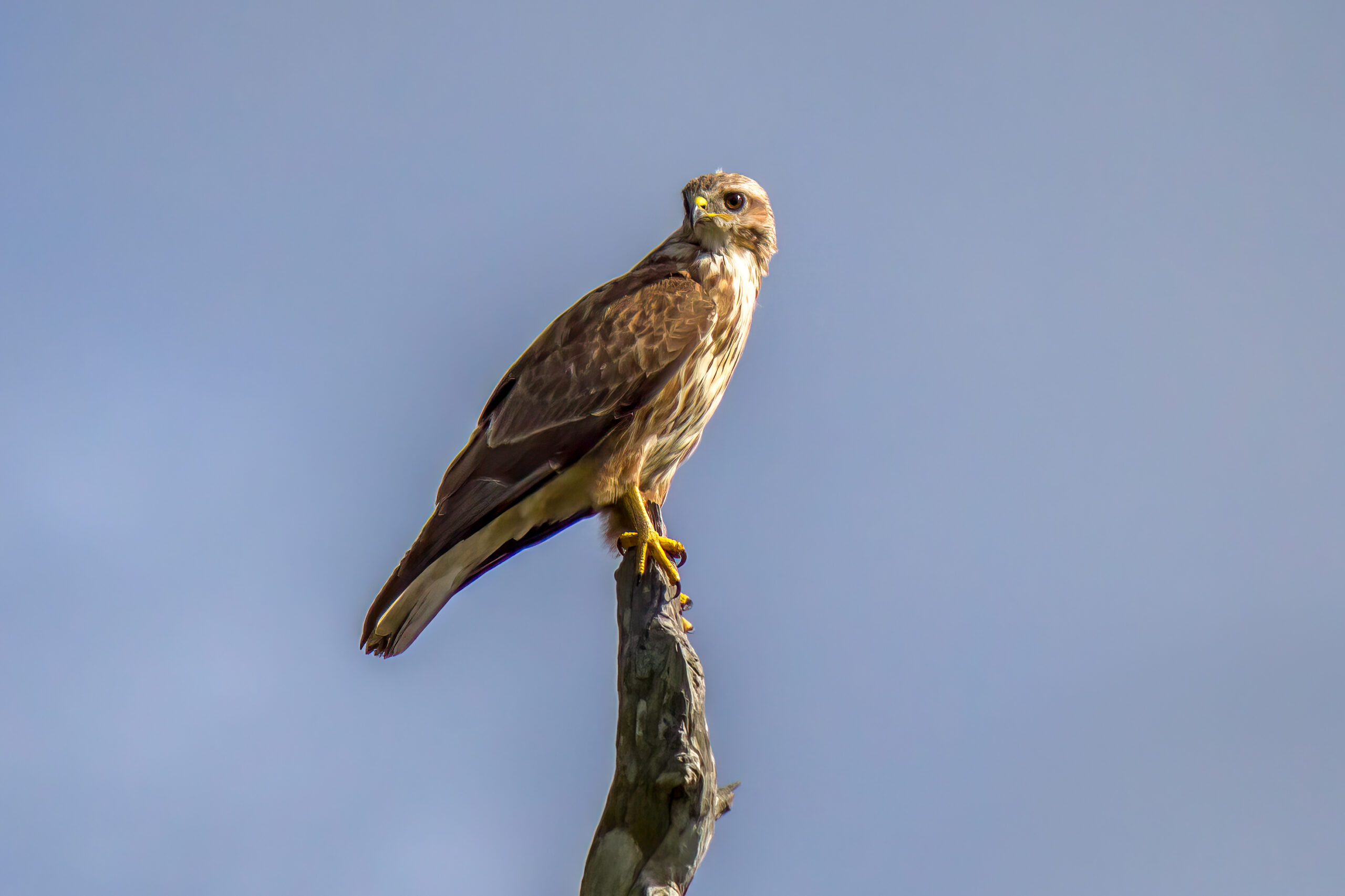Description
The steppe buzzard (Buteo buteo vulpinus) is a distinct eastern subspecies of the common buzzard (Buteo buteo), which is found from Finland and Eastern Europe to Central Asia during breeding season, and winters in sub-Saharan Africa and parts of India. It differs somewhat physiologically from the western subspecies, as it is smaller with a length between 45-50 cm (18-20 in), but with longer wings and tail. Like other common buzzards, steppe buzzards also show great variation in color with varying degrees of rufous to grey in its otherwise brown plumage. The tail feathers of the steppe buzzard is often rufous in appearance whereas tail feathers of the western buzzards is typically whitish. It shares some of its African range with the similar and less common resident forest buzzard (Buteo trizonatus), but forest buzzards are generally whiter on the chest and underparts and are without the barred flanks seen on the steppe buzzard.
Diet & habitat
The steppe buzzard prefers open habitats, such as grasslands, savanna, farmlands, and open woodlands. It can also be found in denser forest regions. It is very common to find them perched on wooden poles, fences, and dead trees. Diet consists of insects, small mammals, birds, amphibians, reptiles, and occasionally carrion. It spots its prey when perched in the open and will swoop down to the ground to catch it. Smaller birds and insects can be caught mid-air.
Migration
The steppe buzzard migrates over long distances. It breeds from eastern Europe to Siberia. Some migrate to India during winter, whereas many migrate to East and southern Africa. The steppe buzzard is particularly abundant in Southern Africa during this period, and becomes one of the most common birds of prey in the region. It arrives in southern Africa in September, where it will stay until March, and a few as late as early April. It is generally a solitary bird or in pairs but will form larger flocks before and during migration.
Nesting
Breeding season for steppe buzzard typically begins with the onset of spring, around April to June, when they return to their breeding grounds. They engage in aerial displays and calls to establish territories and attract mates. Nesting occurs in a variety of sites ranging from ground level to elevated positions in trees, cliffs, or even on artificial structures, with nests being constructed from twigs and lined with softer materials. The female lays 2 to 4 eggs, and both parents share responsibilities in incubating the eggs over a period of about 33 to 38 days. The chicks are altricial at birth, meaning they are largely dependent on their parents for warmth and food. Fledging occurs approximately 42 to 56 days post-hatching.
Status
As stated, the steppe buzzard is a subspecies of the common buzzard, and is not considered as one species on the IUCN Red List where the common buzzard is listed as least concern. With its large range during both breeding and wintering, large population numbers, and adaptability, it is reasonable to consider it to be of least concern.











